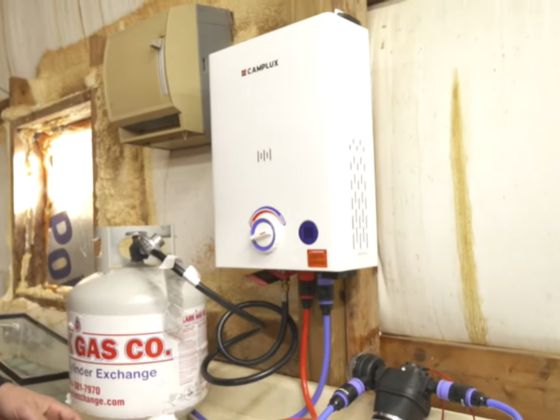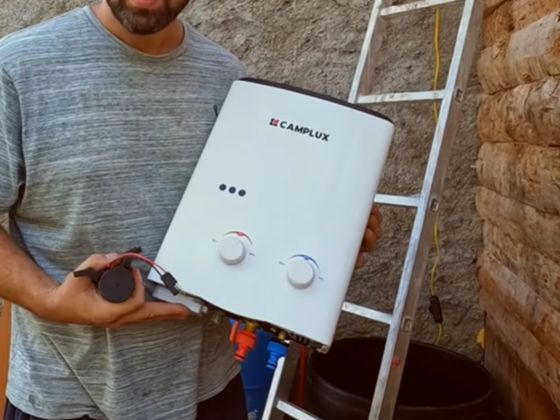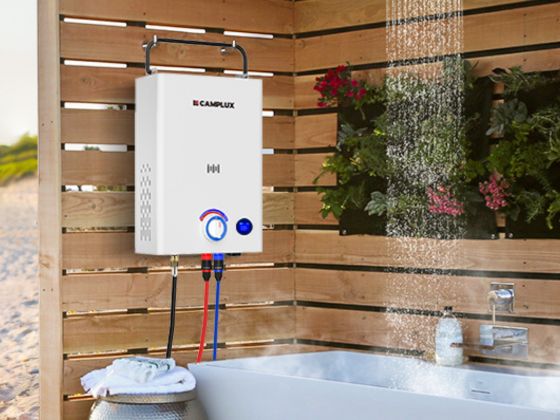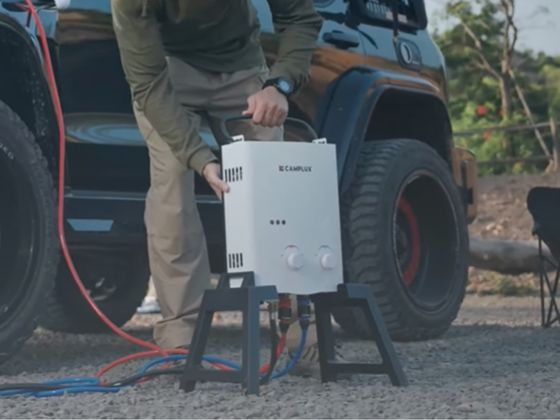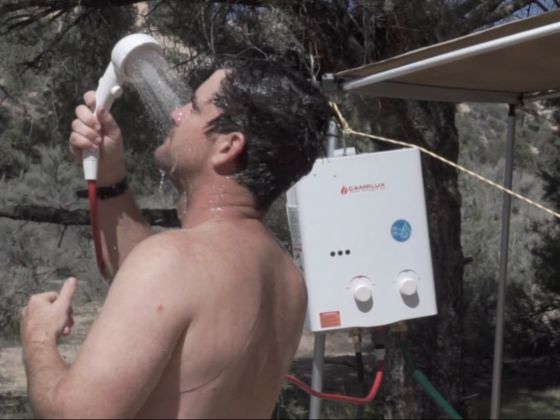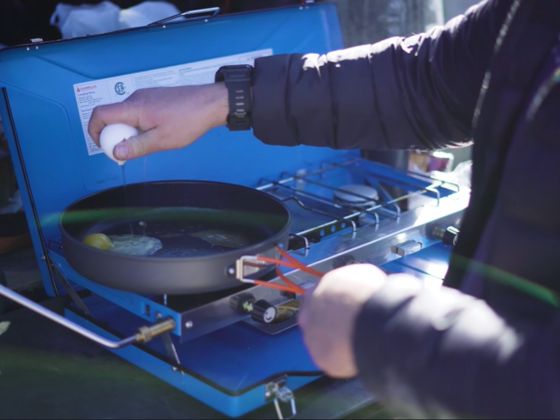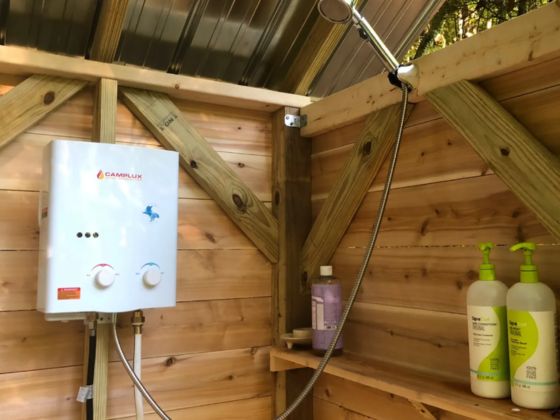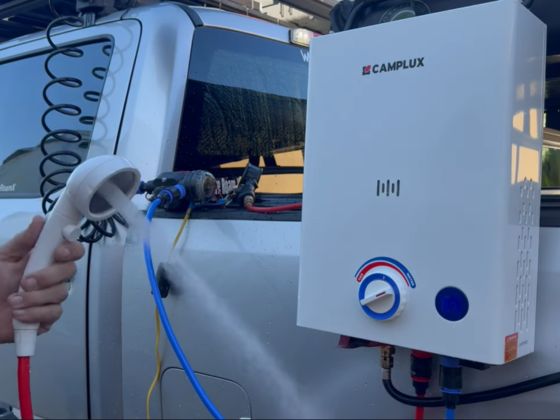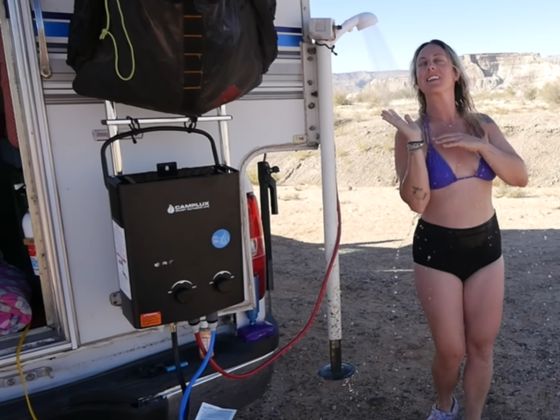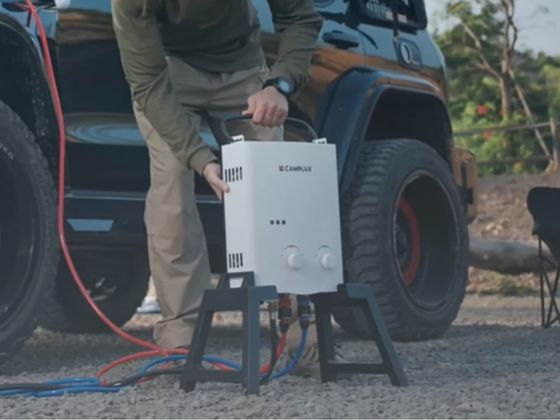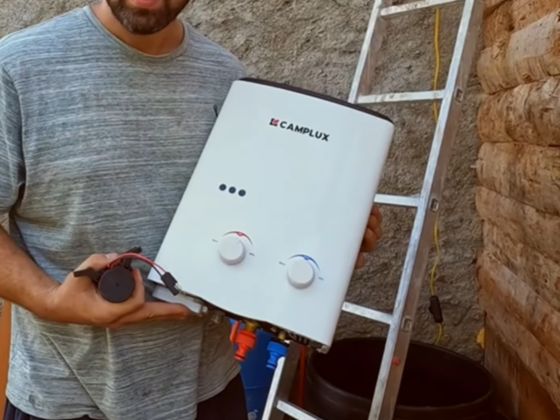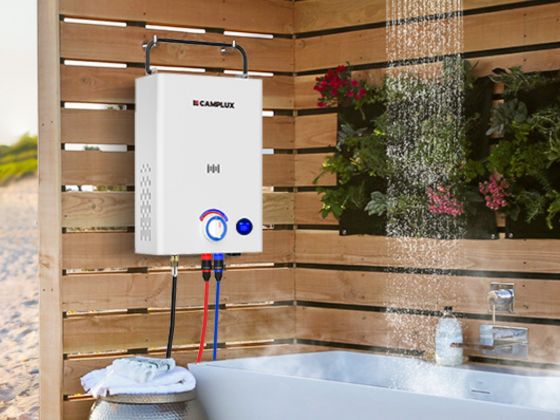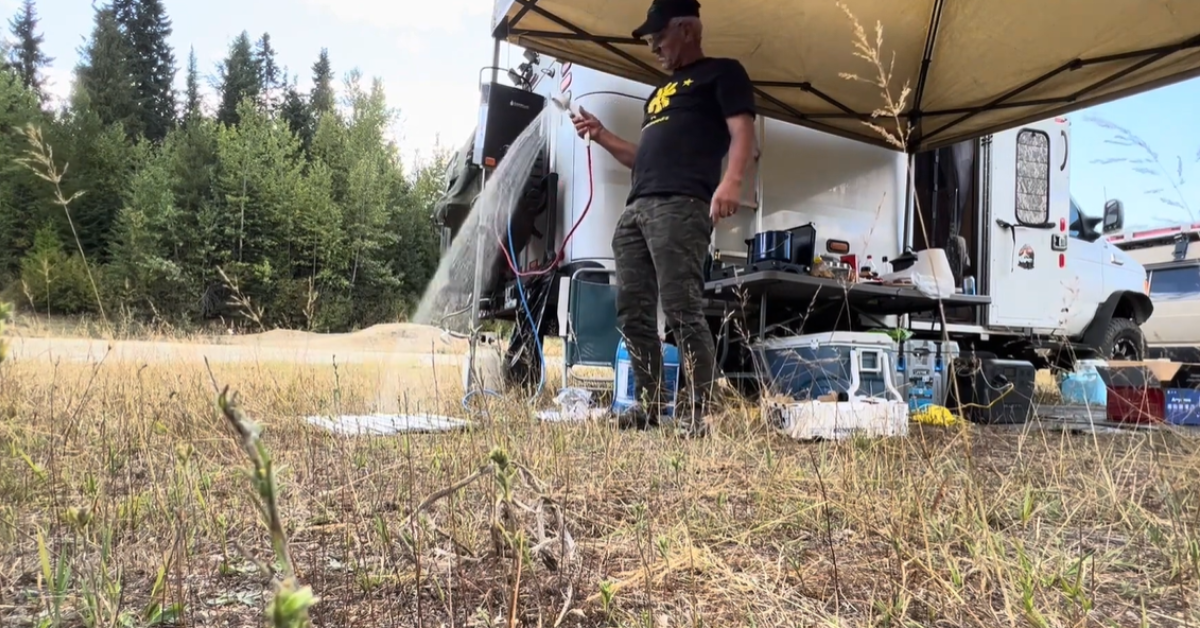Introduction
I learned the importance of picking the right gas bottle the hard way. In early 2024, I set off on my first week-long camping trip with a brand-new portable gas water heater and thought a single gas bottle would be plenty. I didn't pay much attention to the size. Fast forward five days – I'm standing under a chilly makeshift shower because the gas ran out two days early. That trip got cut short with cold water. Needless to say, I now always double-check my gas bottles before heading out. In this post, I'll share what I've learned about choosing the right gas bottle for a portable water heater, so you can keep the hot water flowing and avoid ending a trip early like I did.
Understanding Gas Bottle Types in Australia
When it comes to portable LPG gas bottles in Australia, there are a few common types to consider. In Australia, "LPG" (liquefied petroleum gas) typically refers to propane – the same fuel used for backyard BBQs. Gas bottles come in different sizes and styles, so let's break down the main categories:
- Standard BBQ Gas Cylinders (9kg and ~4.5kg): The 9kg gas bottle (filled with ~8.5kg of gas) is the classic Aussie BBQ cylinder – you see these outside hardware stores and petrol stations everywhere. They're about 47cm tall and hold around 17–18 liters of propane. There's also a roughly "half-size" version (commonly called 4kg or 4.5kg) which is smaller and lighter. The 4kg bottles (filled with ~3.7kg gas) are about 35–45cm tall. These standard cylinders are versatile and can power most portable water heaters just fine. In fact, Camplux portable heaters are designed to use the same type of LPG bottles Aussies use for BBQs (typically 4.5kg or 9kg).
- Small Camping Gas Bottles (2kg and 4kg sizes): For shorter trips or lightweight needs, campers sometimes use smaller refillable bottles. A 2kg mini cylinder is quite compact – good for one or two nights of light use. The 4kg size (3.7kg gas fill) is very popular for camping because it offers a balance of portability and capacity. It's often favored for camping stoves, small heaters, and portable hot water systems. Do note that the 4kg in Australia is the smallest size typically supported in exchange programs (more on "Swap and Go" soon), whereas a 2kg bottle usually must be refilled (no swap service for that size).
- "Swap-and-Go" Exchange Bottles: You've probably seen those cages of gas bottles at service stations or Bunnings. Swap-and-Go is a convenient service where you exchange your empty bottle for a full one on the spot. In Australia, swap programs usually offer two sizes: the standard 9kg (filled to ~8.5kg for safety) and a smaller ~4kg (filled ~3.7kg). You bring in an empty, pay the fee, and walk out with a full cylinder – quick and easy. It's a very popular option, available at thousands of locations nationwide. The nice part is your new bottle is certified safe and "in-date" (within the 10-year inspection period). Many campers start with swap bottles for convenience. Just remember you must swap for an identical size (you can't swap a 9kg for a 4kg without special arrangement). Also, some remote swap points might only stock the 9kg, so check availability if you prefer the smaller size.
- Compatibility Considerations: Modern Aussie gas bottles come with either a POL valve or the newer LCC27 valve. POL is the old screw-in connector (female thread inside the valve) and is very common. LCC27 is a newer quick-connect style introduced recently for added safety. Don't worry – the new LCC27 valves are backwards-compatible with POL regulators. This means the hose/regulator that comes with your portable water heater (almost always a POL type) will still connect just fine to a new LCC27 bottle – you just screw it in as usual. If your bottle uses the LCC27 click-on, you'd use the appropriate connector (some bottles actually have both internal and external threads to accommodate both styles). The key point is to ensure your water heater's regulator is designed for Australia and certified (Camplux heaters, for example, include an AGA-certified regulator and hose to fit standard LPG bottles). If you have an older POL bottle and a new appliance with an LCC27 fitting (less common), adapters are available – but generally, stick to matching standard equipment. Always double-check that you're using LPG (propane) bottles and not other gases. In Australia, LPG bottles are propane by default, which is exactly what portable water heaters need. As long as you're using a standard Aussie BBQ/camping bottle and the supplied regulator, you're good to go on compatibility.

How Much Gas Do You Need?
Once you understand the types of bottles, the next question is: how much gas is enough for your trip or usage pattern? To figure this out, we need to know how much gas your portable water heater consumes, usually given in MJ/h or BTU/h. (MJ stands for megajoules, a unit of energy. BTU is an imperial unit for heat; many appliance specs list both.) The appliance's MJ/hour rating tells you how much gas it burns each hour at maximum output. For example, if a heater is rated at 30 MJ/h, that means in one hour of full-power running, it uses 30 MJ of energy from the gas.
So how does that translate to gas bottle life? We need the energy content of the gas bottle. A full 9kg propane cylinder contains roughly 441 MJ of energy (propane has about 49 MJ per kg, and 9×49 ≈ 441). In practice, swap bottles have ~417 MJ because they only fill 8.5kg for safety headspace. A 4kg (3.7kg fill) bottle has about 196 MJ. Knowing this, you can estimate runtime by dividing the bottle's MJ by the appliance MJ/h. For instance:
- Example: My Camplux 5L portable water heater is about 28–30 MJ/h at full throttle. Using a standard 9kg cylinder (~417 MJ usable), I divide 417 by 30. The result is roughly 13.9 hours of continuous hot water output. That's nearly 14 hours of actual burner time on high. In real camping usage, you'll rarely have the heater running nonstop – it only burns gas when you're running water. If I take quick showers and use hot water for washing dishes, I might use the heater 15–30 minutes a day total. At 30 minutes (0.5 hours) per day on full power, a 9kg bottle could last me around 27 days (13.9 hours / 0.5 h per day = ~27 days)! In practice, heater settings might be lower and usage varies, but you get the idea – a 9kg is plenty for many trips.
- Smaller Bottles: Let's say you opt for a 4kg camping bottle (196 MJ). Using the same heater (30 MJ/h), you'd get about 6.5 hours of continuous run time (196/30 ≈ 6.5). If using ~0.5 h per day, that's around 13 days of hot water. On a weekend trip, a 4kg is more than enough. For a week-long adventure with daily showers, a 4kg could still cover it, especially if you're conservative. A tiny 2kg bottle (approx 98 MJ) with the same usage would last about 3.3 hours of burner time.That might be okay for a 2–3 day trip with minimal hot water requirements, but it'd not be the choice for anything longer or multiple people.
- Consider Trip Length & Usage Frequency: Think about how many people need hot water and how often. A solo camper who only needs a quick rinse each day will use far less gas than a family of four all taking warm showers and washing up. Also consider the climate – in cold weather you might run the heater a bit harder or longer to get that nice hot water. If you're camping off-grid for an extended period or overlanding, you might also be using the gas for other appliances (camp stove, BBQ, gas lantern, etc.), which adds to total consumption. Make sure to account for all gas usage, not just the water heater, when estimating needs. A good rule of thumb is to slightly overestimate usage so you have a safety buffer. It's wise to bring more gas than you think you'll need (or a second bottle) rather than run out in the middle of nowhere. Many experienced campers carry a spare gas bottle or a backup like small butane canisters for emergencies. For planning, you can also refer to appliance specs: if your water heater lists BTU, you can convert to MJ (1 MJ ≈ 948 BTU). Some manufacturers, like Camplux, even give an estimated runtime – e.g. about 16 hours on a 9kg bottle for continuous hot water in one of their models. This helps gauge how much gas you'll burn through.
In summary, figure out your heater's consumption, then choose a bottle size that comfortably covers that duration. If in doubt, go one size up or bring an extra cylinder to avoid any "cold".
Portability vs. Capacity: Finding the Right Balance
Bigger gas bottles hold more fuel, but they're also heavier and bulkier to transport. There's always a trade-off between portability and capacity, so consider your camping style and vehicle space:
- Weight Matters: A full 9kg gas cylinder isn't exactly 9 kg total – the "9kg" refers to the gas content. The cylinder itself has weight too (tare weight). In practice, a full 9kg bottle can weigh around 17–19 kg total. That's like hauling a heavy suitcase or a small child around. If you need to lug it from your car to a distant campsite, you'll feel it! On the other hand, a 4kg (3.7kg gas) bottle when full weighs roughly 8.5–10.5 kg – much more manageable for carrying short distances. The tiny 2kg bottles are even lighter, of course (a couple of kilos plus maybe ~3 kg tare, so ~5 kg full). Think about how far and how often you'll need to move the bottle. If you camp right next to your car or have a camper trailer with a gas bottle mount, a 9kg is no problem. If you hike into a campsite or have limited storage, a smaller bottle shines.
- Runtime vs. Convenience: Larger capacity means longer runtime – simple as that. If you're on a long caravan trip or living out of a van, a 9kg (or even dual 9kg cylinders) is common, because you might be running a fridge, stove, and water heater off that gas. Many caravans/RVs in Australia are set up to hold two 9kg bottles on the drawbar. This gives extended use and a backup bottle to switch to when one runs dry. For weekend campers or the occasional backyard outdoor shower, such a large bottle may be overkill – a 4kg cylinder could be sufficient and easier to stash in your car trunk. Always match the bottle size to the trip duration and usage. If you're unsure, err on the side of a bigger bottle or carry an extra. You can always bring a small 2kg bottle as a backup in case your main one runs out; it's lightweight insurance.
- Space and Fit: Don't forget to consider the physical dimensions. A 9kg cylinder is about 31cm diameter and 47cm tall. Make sure your vehicle or storage spot can accommodate that. A 4kg is smaller (around 24–27cm diameter, 35–45cm tall), fitting into tighter spaces. If you've got a roof rack or a jerry-can holder, check if they make brackets for gas bottles – there are holders for 4kg and 9kg sizes. For those with limited space (say, a small 4WD or sedan loaded with gear), the smaller bottle might be the only practical choice, even if it means possibly needing a refill sooner.
- Use Cases: To illustrate, if I'm camping at a powered campground for a week, I might bring my 4kg bottle knowing I can likely get a refill on site or nearby if needed, and I appreciate the easier handling. If I'm going truly off-grid for a week or more, especially with family, I'll take a 9kg for peace of mind (and maybe a spare). If I'm just setting up a backyard summer shower or patio heater, I'll hook it to the full-size BBQ bottle I already have at home – weight isn't an issue when it's stationary. Tailor your choice to how mobile you need to be versus how long you need the gas to last. Sometimes carrying two medium bottles can be easier than one giant one – e.g. two 4kg bottles gives roughly the same gas as one 9kg, but you can split the weight and have one as backup. The downside there is two sets of rental/swap costs and equipment, but it's an option.
Find a balance that suits you. If you can handle the weight and have room, a bigger bottle means fewer worries about running out. If portability and easy handling trump maximum capacity for you, go smaller but plan refills accordingly.

Safety Considerations
A big or small gas cylinder? Safety is paramount when using LPG. Gas is fantastic for camping, and we should pay more attention even though they are so so common in our lives. Here are some key safety tips:
- Secure Storage & Transport: Always transport gas bottles upright, in a well-ventilated space. Never lay a propane bottle during use – it should stay vertical like ALL THE TIME. In a vehicle, secure the bottle so it won't roll around or tip over. Crack a window if the bottle is inside a car, just in case of a slight leak (propane is heavier than air and can pool in enclosed spaces). Don't leave cylinders in a hot car in the sun for extended periods – heat increases pressure. It's best to transport them in the boot/trunk or tray of a ute, away from direct sunlight. When camping, keep the bottle in shade if possible and away from the campfire or cooker.
- Use and Placement: Always use your gas bottle and portable water heater outdoors in a well-ventilated area. The heaters and gas bottles should never be used inside a tent, a caravan, or any enclosed space due to the risk of carbon monoxide buildup and fire hazard. Set up the water heater a safe distance from the gas bottle (1~3 meters of hose length away). This keeps any potential gas leaks away from flames and avoids splashing water on the gas bottle or connections.
- Connection Checks: Each time you connect a gas cylinder to your water heater (or any appliance), check the fittings. Make sure the rubber O-ring or seal on your regulator is in good condition (not cracked or missing). Screw the connection on firmly (remember most POL fittings are left-hand thread – opposite to usual). Once connected, do a leak test before igniting the heater. The easy way is a soapy water test: Mix some dish soap and water in a spray bottle or bucket, turn on the gas valve slightly to pressurize the system, then spray or brush the soapy solution around all connection points (valve, regulator, hose fittings). If you see bubbles forming, you have a leak! Turn off the gas, tighten or refit the connection and test again. Never use a flame to check for leaks. Your nose is also a good detector – if you smell that rotten-egg LPG odor, something's leaking.
- Regular Inspection: Give your gas bottle and equipment a once-over periodically. Look for rust, dents, or damage on the cylinder. By law in Australia, gas cylinders must be re-inspected and stamped every 10 years. Check the date stamp on the bottle (usually on the collar) – if it's out of date, you should take it to a test station for re-certification or swap it for a newer one. Filling stations will refuse to fill an out-of-date bottle (it's illegal to refill if more than 10 years since last test)4wdingaustralia.com. This is another reason swap services are handy – they will give you an in-date bottle and handle the testing on their end. Also inspect your gas hose for cracks or wear, especially if it's a few years old or has been in the sun a lot. Replace any suspect hoses or regulators; they are not expensive compared to the risk of failure.
- During Use: Only open the gas valve when you're ready to use the heater, and close it fully when not in use. Avoid smoking or open flames near the gas bottle when changing connections or if you suspect a leak. Keep the cylinder upright on a level surface while in use to ensure proper flow. Most portable water heaters (like Camplux models) have safety features like tilt shut-off and flame failure shut-off – but don't test those limits. Give the unit plenty of ventilation and follow all the instructions in the manual. If the heater has been unused for a long time, double-check for insects or debris that might have gotten into the burner(some folks cap their heater's gas inlet when storing).
- Emergency Preparedness: It's wise to have a fire extinguisher or fire blanket accessible, especially when dealing with gas appliances. Know how to shut off the gas quickly. In case you ever do have a fire at the appliance, shut the gas off at the bottle if it is safe to do so. For leaks you can't fix or if you detect gas and can't find the source, turn off the valve, ventilate the area, and don't use the appliance until resolved.
Most of these tips are common sense, but it's amazing how easy it is to overlook them when you're excited to set up camp. A few minutes spent on safety checks are well worth preventing an accident. As one more incentive: performing these checks (like the soapy water test) can literally save your life and property – LPG is wonderful but unforgiving if mishandled. Stay safe and you'll enjoy worry-free hot showers in the wild!
Refilling vs. Swap-and-Go: What's the Best Option?
When your gas bottle runs empty, you have two main options: get it refilled or exchange it (Swap'n'Go). Each has its pros and cons, and the "better" choice can depend on your situation. Let's compare:
Refilling your gas bottle: This means taking your cylinder to a refill station (many service stations, outdoor/camping stores, and some holiday parks offer LPG refills). They will fill your bottle on the spot (or you leave it with them for a short time). Advantages of refilling: it's often cheaper and you pay only for the gas you need. On average, refilling can cost significantly less per kilogram of gas than doing a swap . Also, when refilling, they fill to the maximum safe level (until the gas liquid reaches 80% of bottle volume). Interestingly, this can mean you sometimes get a bit more gas in a refill than you would from a standard swap bottle. For example, swap 9kg bottles are pre-filled to 8.5kg, whereas a careful refill might get pretty close to 9.0kg if your bottle can take it. This yields longer usage time from the same bottle. Another benefit: you keep your own bottle. This is nice if you invested in a new bottle or one with a gauge, etc., and you don't want to exchange it. However, there are some downsides to refilling: it requires finding a place and usually waiting a few minutes. Not all gas stations do refills nowadays (swap services have become more common, and some stations eliminated on-site refilling for safety/staffing reasons). If you're in a remote area or traveling on a Sunday, the local refill place might be closed, whereas swap cages are accessible 24/7 at many servos. Also, your bottle must be in good condition and in-date to refill – if it's out of test, you'll be turned away until you get it re-certified. Lastly, you might occasionally encounter under-trained staff who don't fill completely or make you wait. But overall, if cost is a priority and you're organized, refilling is an excellent and safe option (assuming the retailer follows proper procedure).
Swap-and-Go (Exchange) bottles: The biggest selling point here is convenience. You can swap an empty for a full bottle in literally a couple of minutes, and you can do it at night or on weekends from an unattended cage by paying at the counter. It's also safer in the sense that your new bottle has been professionally inspected, tested, and leak-checked. You don't have to worry about the 10-year test date – swap bottles are always within date and in good shape (or they get pulled from circulation). This can give peace of mind that your cylinder is not going to be faulty. Swap is great when you're on a road trip and just want to grab a full bottle and go, with no waiting. It's also helpful if your current bottle is old or damaged – you can swap it and effectively upgrade to a newer bottle for just the cost of the gas. Now, the downsides: as mentioned, you generally pay more for the gas with swap. You're paying for the convenience and servicing. Over time, this can add up – some estimates suggest exchange gas can cost 15–30% more per unit than a refill. Additionally, you might be getting slightly less gas (that 8.5kg vs 9kg thing), though in practical terms the difference is small. Another consideration: you might not always like the bottle you get – sometimes you surrender a nice clean bottle and get a scuffed one back. Cosmetic, yes, but noted by some people. However, since you own the bottle you receive, you can swap it again next time if you're not happy. One more con: not every swap location stocks the smaller 4kg bottles. The 9kg swaps are ubiquitous, but 3.7kg (4kg) swaps, while available, may not be at every location, especially in country areas. So if you rely on a 4kg swap, plan ahead where you can exchange it. In a pinch, remember you can refill a swap bottle too – just because it has a swap brand label doesn't mean you can't treat it like any other cylinder.
Which to choose? If you prioritize speed and simplicity, Swap'n'Go is fantastic – many campers use swap bottles for the sheer ease. You also get that extra assurance of a fresh inspection on the bottle each time. If you're watching budget or need maximum gas, refilling is the way to go (especially for frequent travelers – those savings add up, and you maximize the gas in your bottle). Personally, I do a mix: I have swap bottles for my 9kg – I'll exchange when it's convenient, but I won't hesitate to refill them if I find a cheaper place on the road. If my bottle is approaching expiry or gets a bit rusty, I'll definitely swap it out rather than pay for testing, which is commonly what many folks do. One good strategy is to keep two bottles in rotation. Use one until it's empty, then swap it while you use the second – this way you never run out of gas at an awkward moment (the ol' mid-shower cold surprise!). Having two also allows you to completely empty a bottle before swapping, so you're not trading away usable gas. In summary, refill vs swap comes down to convenience vs cost (and availability). Both are safe if done properly. There's no wrong choice – just what's right for your circumstances. And as a last tip: if you do refill, try to do so in larger towns or places where it's cheaper; remote area refills can be very pricey, where swaps might be more standardised in price.
Tips for Choosing the Right Gas Bottle
To wrap up, here's a handy list of tips when deciding on a gas bottle for your portable water heater:
- Follow Manufacturer Recommendations: Always check what your water heater's manufacturer suggests regarding gas bottle type and regulator. Use the supplied hose/regulator that comes with your unit – it's rated for standard LPG bottles and will ensure a proper fit and pressure. For example, Camplux heaters include an Australian-standard regulator pre-set for BBQ bottles, so you don't need any special adapters. If the manual says use propane only (which is the case for all LPG portables), don't try to use other gases. Adhere to any minimum or maximum cylinder sizes noted (most portables don't mind any size, but some larger fixed systems might require certain setups). In short, read the manual and stick to it – it will have specific guidance on safe operation and hook-up.
- Assess Your Hot Water Usage Needs: Be realistic about how much hot water you'll use. If you're a lone camper doing a quick rinse daily, you can get by with a small bottle. If you've got a family of four that all want warm showers every evening, lean toward a bigger bottle or multiple bottles. Consider trip length – a bottle that lasts a weekend might fall short on a week-long excursion. Also factor in if the gas will fuel other devices (stove, grill, heater). A good exercise is to calculate daily consumption (in minutes or hours of burner use) and then see Section 3 above for how that translates to bottle size. And remember, weather and water temperature play a role – colder conditions might make you use more gas to heat the water up, whereas in hot weather you might dial the heater down.
- Portability vs Duration: If you know you'll have to carry the gas bottle around by hand often (beach camping, walk-in sites, moving camp frequently), a lighter bottle can save your back. But if you're stationary and can handle the weight, a larger bottle means less frequent changes/refills. Match the bottle to your mode of travel – backpackers obviously can't haul a 9kg cylinder; they might even opt for small butane canisters and a different heater (or no heater). Car campers and 4WD adventurers can usually manage a 4kg or 9kg in the vehicle with no issue.
- Ensure the Bottle is Certified and in Good Condition: This is a big one. Always use bottles that are stamped within the 10-year test period. If buying or borrowing a bottle, check the date and the general condition. Look for an Australian Standards marking on the bottle (they usually have something like "AS2469" or similar stamped) and that test date. If you see a bottle with obvious damage or excessive rust, don't use it. All reputable swap bottles will be safe, and new bottles from stores come certified. If you own bottles, keep track of when they're due for testing. It's often easier to just swap for a new one instead of paying for a test, unless you have a special bottle you want to keep. Quality matters – a cheap no-name gas bottle from a dubious source isn't worth the risk; stick with standard BBQ bottles from known brands or swaps.
- Plan for Refuels/Swaps: Before heading out on a long trip, identify where you can refill or swap along your route. There are apps and websites (like Gas Bottle Refills or Fuel Map) that list LPG points. Knowing that you can get more gas easily will guide whether you can start with a smaller bottle or need a big one. If going truly remote, always carry more gas than you think you'll need. It's not a bad idea to carry a spare 1 lb propane canister (the little green ones) with an adapter as a backup for emergencies, or a second bottle if space allows. Running out of gas not only kills your hot water, but could affect cooking and warmth. So, if unsure, err on the side of caution and bring extra.
- Budget and Usage Frequency: If you only camp once a year, it might not make sense to invest in multiple large gas bottles. You could just use the one 4.5kg bottle you also use for your home BBQ. If you're on the road full-time or frequently camping, investing in a couple of bottles (so you can rotate and always have a full one ready) is worth it. Also budget for gas usage – propane is relatively affordable, but if you take many long hot showers, you'll go through it faster. Knowing your usage helps avoid overpaying for excessive refills or swaps. And remember, swaps might cost a bit more, but the ease might be worth it for you. Plan according to what you value – time vs money vs comfort.
- Don't Forget Safety & Accessories: Make sure you have the right gear to use with your bottle: an appropriate spanner (wrench) if your regulator doesn't have a handwheel, a gas bottle key if needed for older types, and maybe a gas level indicator (some people like those little magnetic gauges or inline indicators). While not 100% accurate, they can give a rough idea of remaining gas. Always transport the bottle with the safety cap on the valve (those plastic caps that plug into the valve when not in use – they prevent leaks if the valve knob gets knocked). If your bottle doesn't have one, you can pick them up cheaply. Store the bottle upright and secure during travel – there are tie-downs and milk crate-style holders that can help. Essentially, set yourself up so using the gas is hassle-free and safe each time.
By considering these tips, you'll be well on your way to choosing a gas bottle that suits your needs and ensures you have a hot shower whenever you want one out there in the wild.
Conclusion
Choosing the right gas bottle for your portable water heater comes down to understanding your needs and the trade-offs. We've looked at the common bottle types in Australia, from big BBQ cylinders to petite camping bottles, and weighed the pros and cons of each. We've calculated gas usage so you won't be caught out mid-trip, and we've emphasized safety steps that should become second nature (because nothing ruins a trip faster than an avoidable accident). In my case, not paying attention to gas supply ended an adventure early – I hope the insights above spare you that disappointment.
To recap the key points: pick a bottle size that will comfortably cover your hot water usage for the trip (when in doubt, go a bit larger or bring a spare), ensure compatibility and quality (standard Aussie LPG bottles and proper connectors), and always handle gas safely (upright storage, leak checks, in-date cylinders). Whether you choose to refill or swap, make a plan so you're never left without fuel for that blissful warm shower under the stars.
Ultimately, experience will guide you – after a few trips, you'll know exactly how long a 4kg or 9kg lasts for your style of camping. And you can always adjust as you go; maybe you start with a 9kg and later realize a 4kg suffices (or vice versa). The good news is LPG is readily available across Australia, and services like Swap'n'Go make it easy to stay topped up. So get out there, enjoy the outdoors with the comforts of hot water, and camp confidently knowing you've got the right gas setup.

